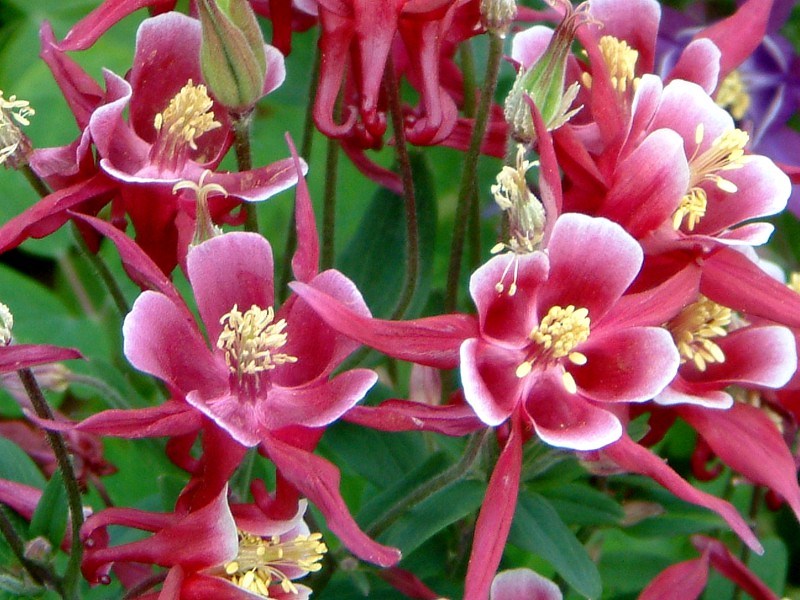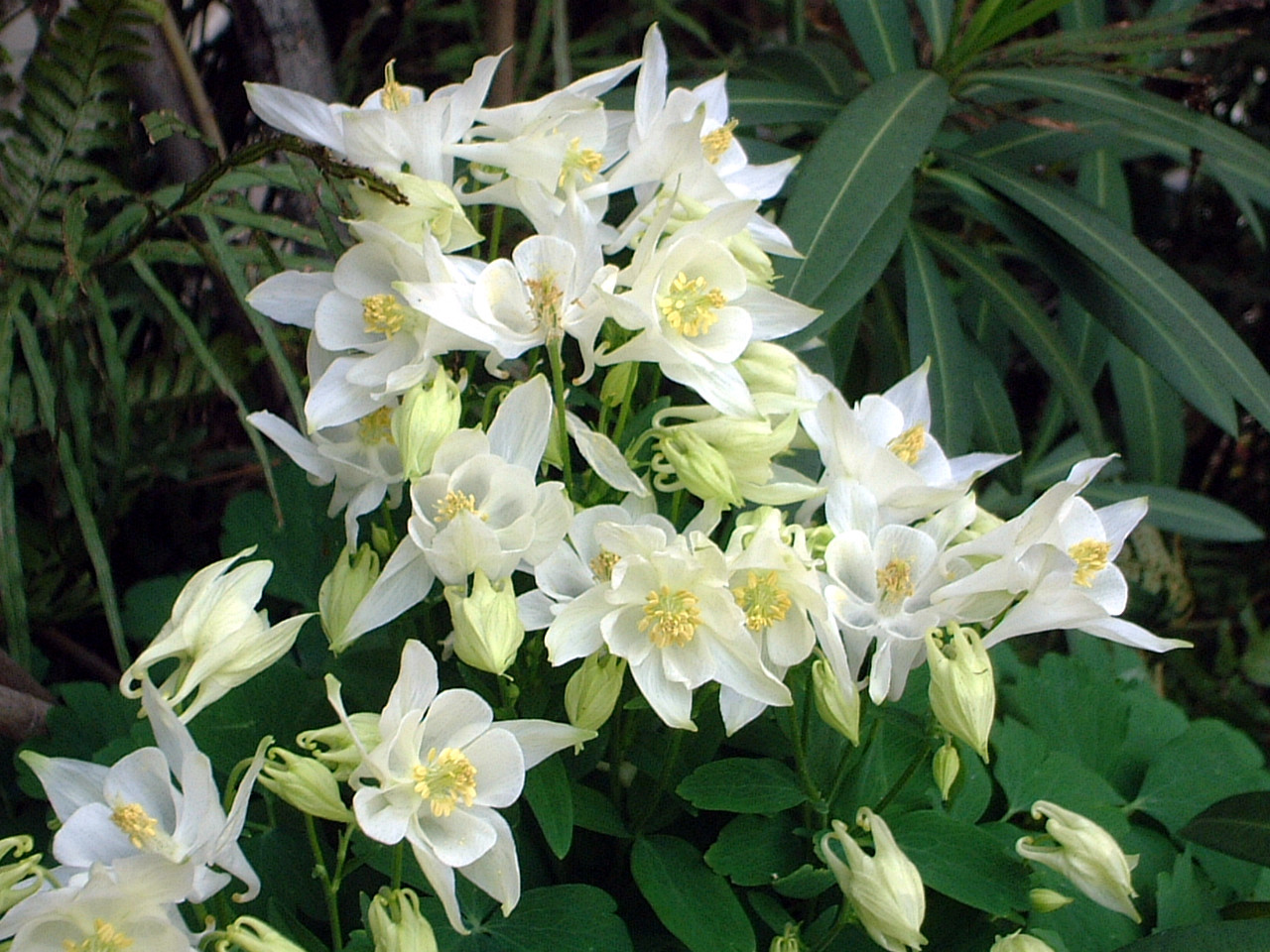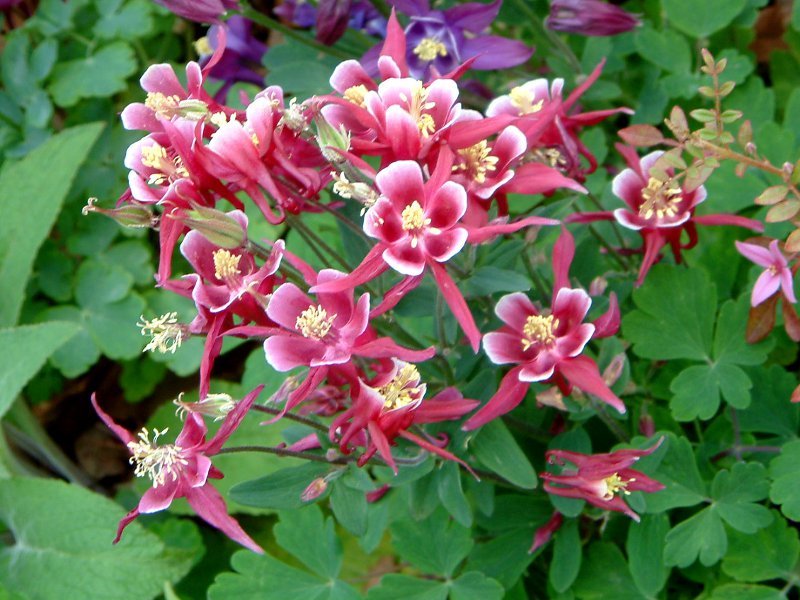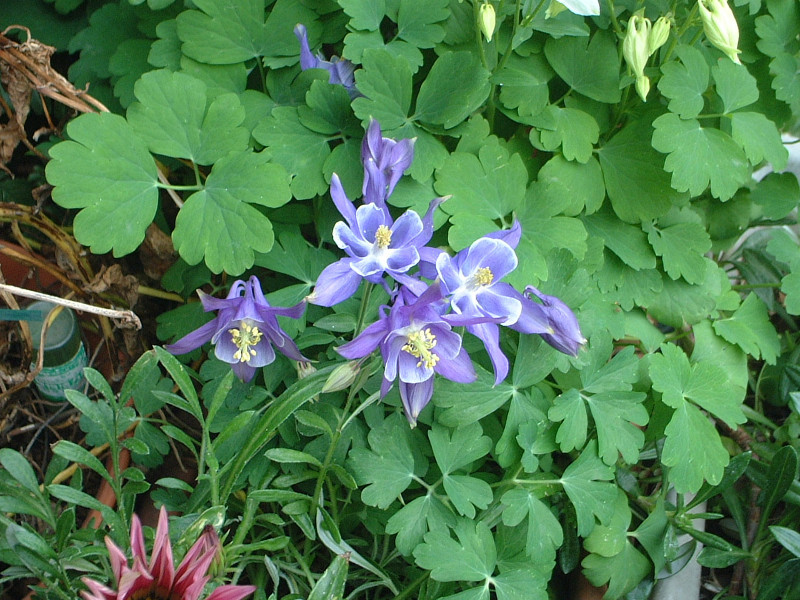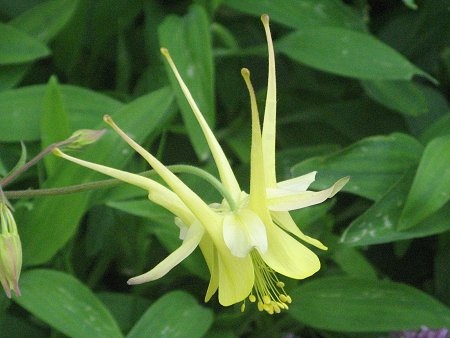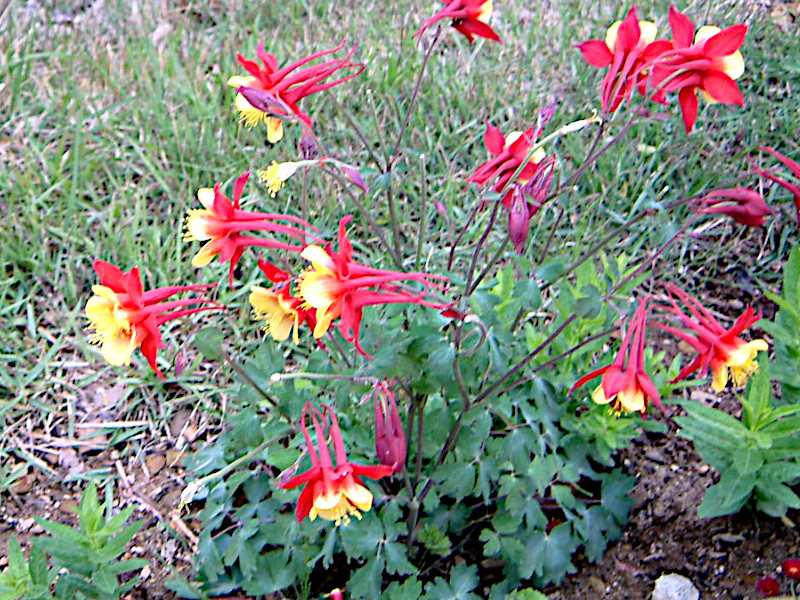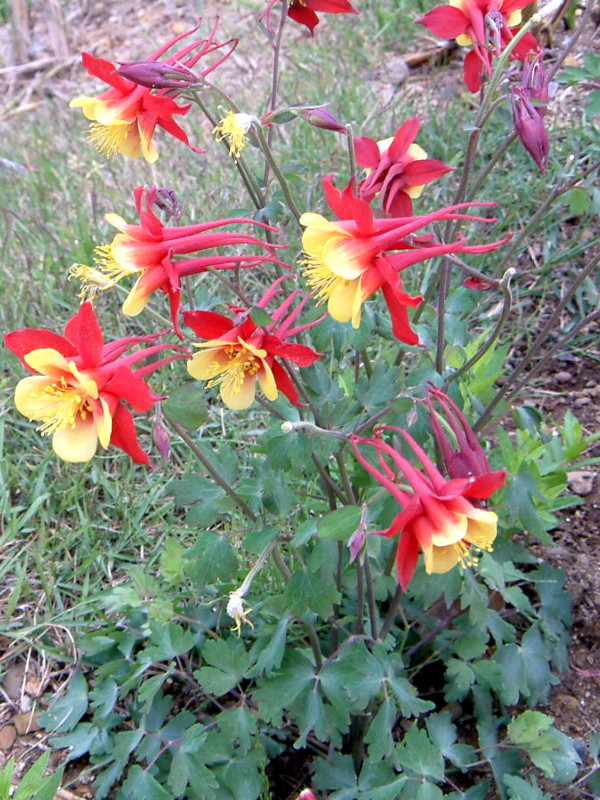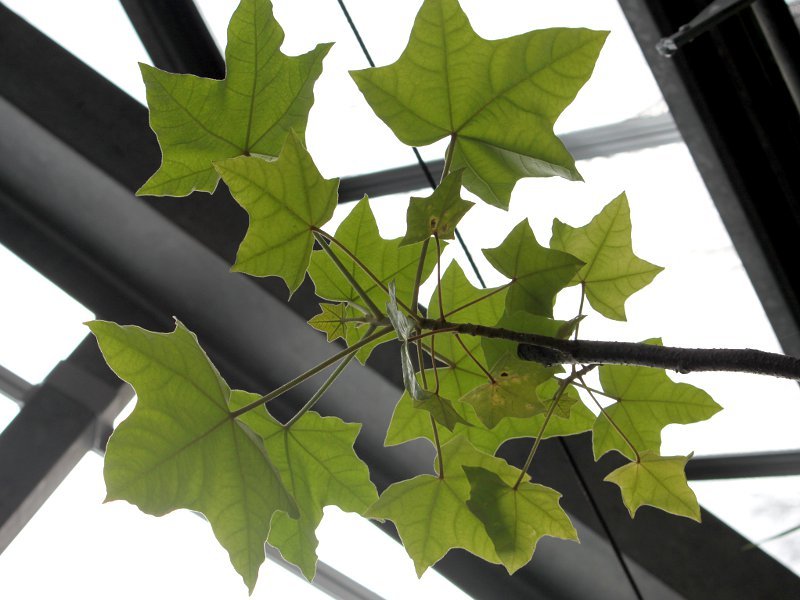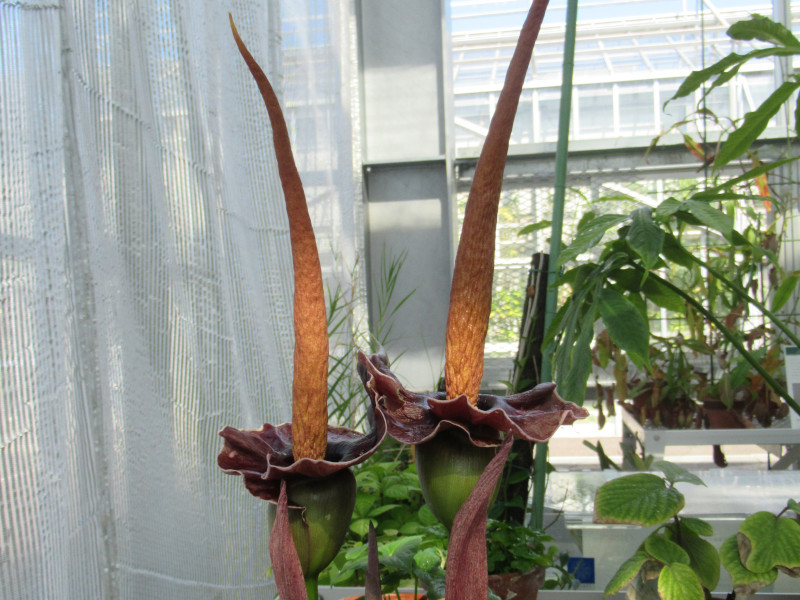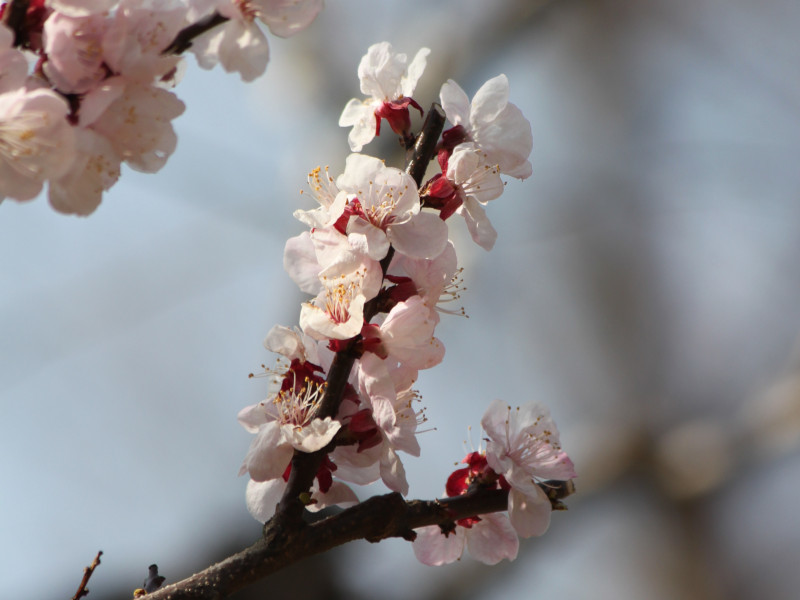Aquilegia
- Flower nameAquilegia
- Scientific nameAquilegia spp.
- Aliasアキレギア, Aquilegia, イトクリ, Columbine, Odamaki
- Place of originJapan
- Place of floweringGarden
- Flowering seasonApril, May, June
- Language of flowersRed flower is 'anxious and trembling'.
What is Aquilegia
Aquilegia (scientific name: Aquilegia spp.) is native to Japan and Europe, and is a cold-resistant perennial herb of the family ranunculaceae. Leaves at the end of a long petioles are split further in 2 times 3 out compound leaves, and the small leaves are further torn. The flowers have a sense of transparency like jellyfish floating in the sea. However, what looks like this petal is calyx, and the actual flower is the white part inside. The Japanese name odamaki is based on the fact that the shape of the flower resembles a cotton ring-wrapping device "Odamaki".
Speaking of Odamaki narrowly in Japan, it is the scientific name: Aquilegia flabellata var. Flabellata, but in a broad sense it refers to the entire Aquilegia. In Japan, the blue purple Aquilegia pumila (Miyama-odamaki, scientific name: A. flabellata var. Pumila) and purple-brown Yama-odamaki (scientific name: A. buergeriana) are two species native to the mountain. However, it is generally the case that many flower color-rich western species Aquilegia (Western Odamaki) .
The flower language of the aquilegia is "decision to victory". When it was called lion grass in Europe, it is because human being rubbed the leaf so that the lion which is the king of the beast could eat this leaf. It is a purple flower that was used. The birth flower on June 2 is a red aquilegia, and the flower language "we are anxiously shaking".
General name: Aquilegia spp., Scientific name: Aquilegia spp. origin: Japan / Europe, Living type: Cold tolerant evergreen perennial plant, plant height: 20-30 cm, leaf shape: 2 times 3 out compound leaves, lobular leaf edge: tooth, bisexual flower, inflorescence form : Single-point inflorescence, corolla: head-like, range-like (extending from the base of the petal), flowering stage: April to June, flower color: bluish purple, white, yellow, red, flower diameter: 2-3 cm, fruit type: follicle, remarks: Insect flower, whole grass toxic.
